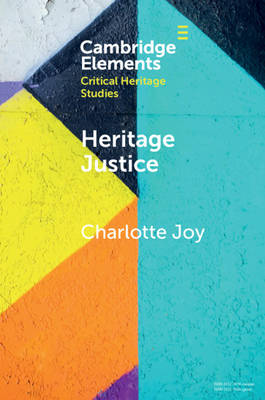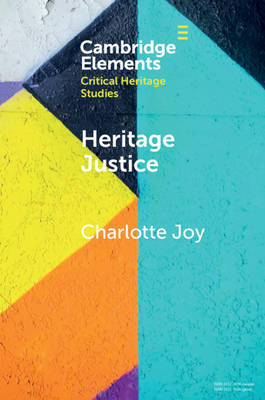
- Afhalen na 1 uur in een winkel met voorraad
- Gratis thuislevering in België vanaf € 30
- Ruim aanbod met 7 miljoen producten
- Afhalen na 1 uur in een winkel met voorraad
- Gratis thuislevering in België vanaf € 30
- Ruim aanbod met 7 miljoen producten
Zoeken
€ 31,95
+ 63 punten
Omschrijving
Heritage Justice explores how far past wrongs can be remedied through compensatory mechanisms involving material culture. The Element goes beyond a critique of global heritage brokers such as UNESCO, the ICC and museums as redundant, Eurocentric and elitist to explore why these institutions have become the focus for debates about global heritage justice. Three broad modes of compensatory mechanisms are identified: recognition, economic reparation and return. Arguing against Jenkins (2016) that museums should not be the site for difficult conversations about the past, Heritage Justice proposes that it is exactly the space around objects and sites created by museums and global institutions that allows for conversations about future dignity. The challenge for cultural practitioners is to broaden out ideas of material identity beyond source communities, private property and economic value to encompass dynamic global shifts in mobility and connectivity.
Specificaties
Betrokkenen
- Auteur(s):
- Uitgeverij:
Inhoud
- Aantal bladzijden:
- 75
- Taal:
- Engels
- Reeks:
Eigenschappen
- Productcode (EAN):
- 9781108820523
- Verschijningsdatum:
- 19/11/2020
- Uitvoering:
- Paperback
- Formaat:
- Trade paperback (VS)
- Afmetingen:
- 152 mm x 229 mm
- Gewicht:
- 99 g

Alleen bij Standaard Boekhandel
+ 63 punten op je klantenkaart van Standaard Boekhandel
Beoordelingen
We publiceren alleen reviews die voldoen aan de voorwaarden voor reviews. Bekijk onze voorwaarden voor reviews.











